Large, luxurious RVs lure us in with their curb appeal, but bigger isn’t always better. We’ll tell you why as we look at the benefits of smaller RVs.
Sure, we’ve lived in a 43’ diesel pusher for a couple of decades, but we’ve also traveled overseas in far smaller rigs for extended periods. So, we do understand the trade-offs of living large compared with the benefits of smaller RVs.
That said, you have to remember that we didn’t start out RVing with the intention of vacationing, weekend camping, or even a few long road trips per year. We bought our first RV with the intention of traveling and living in it full-time for an extended period. We sold our sticks & bricks home and bought a FAR smaller home-on-wheels.
Not long into our travels, we realized that we wanted to continue living full-time in an RV, but we also knew that we’d have to work full-time in it as well. And by that point we’d come to realize that boondocking for extended periods is our favorite way to roll, so we knew we needed some pretty large holding tanks among other things. All of which led us to buy our current 43’ behemoth.
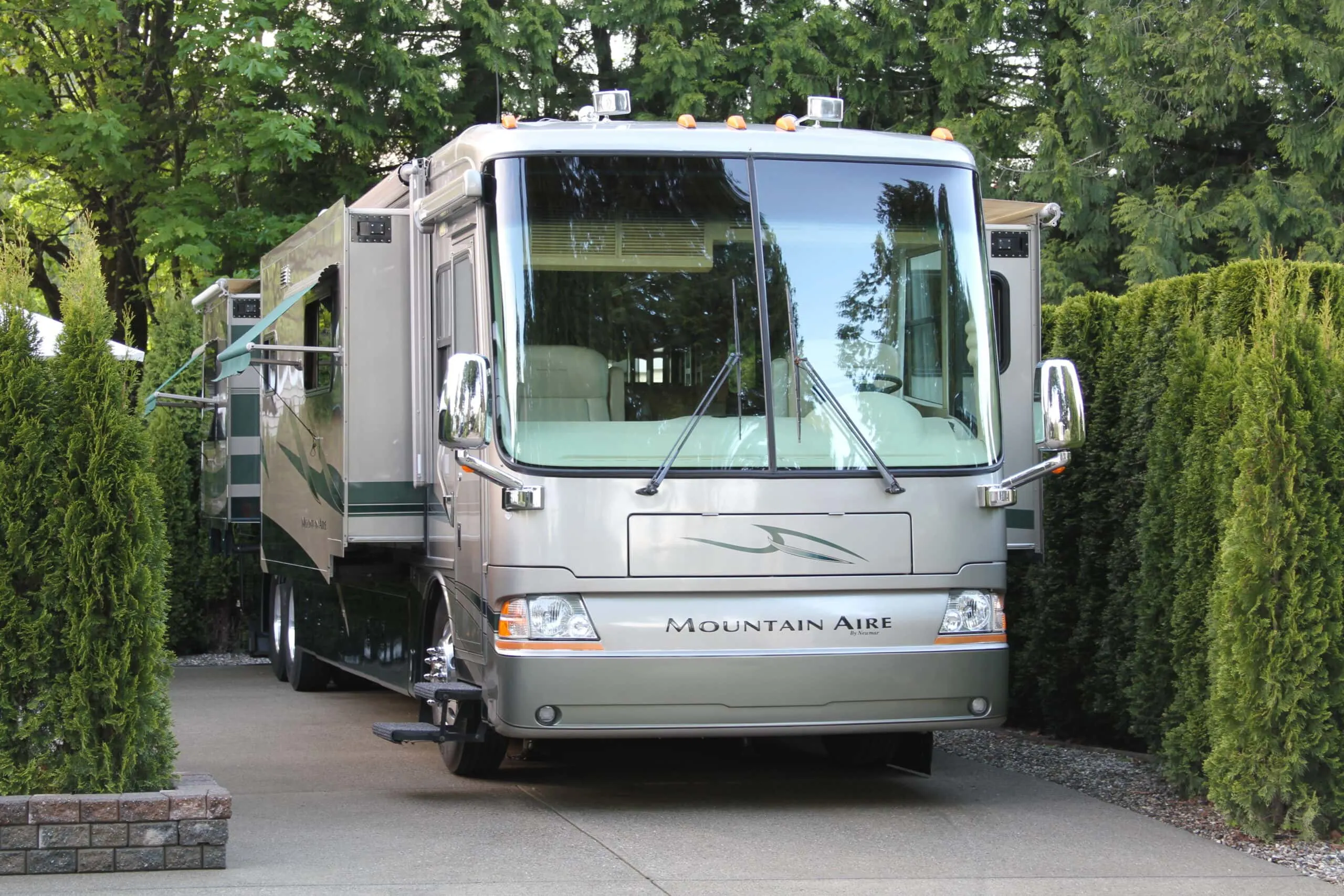
Our RV is a 43-foot Class A diesel pusher.
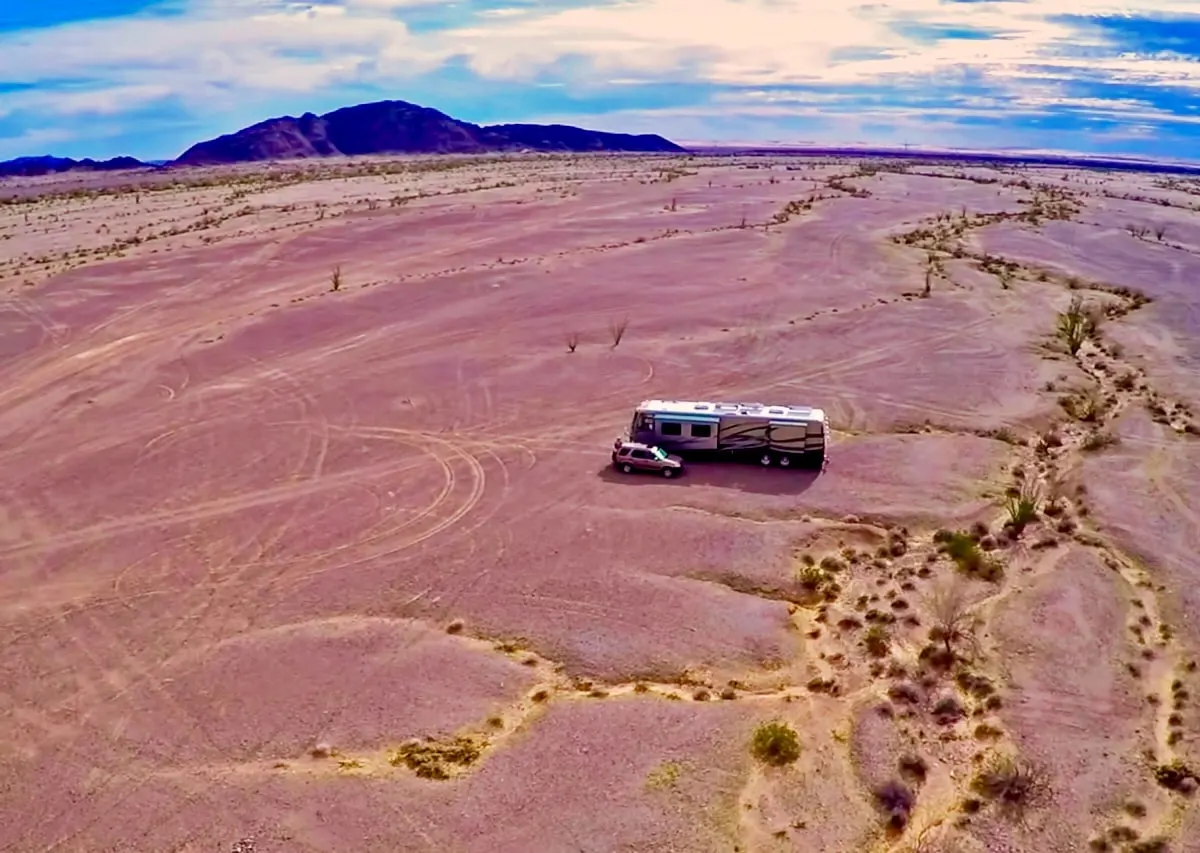
Because we live and work in our RV full-time, and because our go-to camping style is boondocking, we needed a substantial amount of space and some very large holding tanks. But not everyone RVs the way we do.
But all RVers have different needs and different desires. So, what works for one may not work well at all for another. That’s why when people ask us what size RV we think THEY should buy, we always offer the same advice: “Buy the SMALLEST RV that you think you can be comfortable in!”
Bigger isn’t always better, friends. Let’s take a look at the alternatives – and the many benefits of smaller RVs.
What Are the Smallest Types of RVs?
In discussing the benefits of smaller RVs, we’ll first take a look at the smallest types and work our way up to the largest “small RVs” (sounds contradictory, doesn’t it… but hang in with us).
We’ll begin with a type of RV that’s currently a very hot commodity in North America and in Europe as well.
Vans
Small camper vans are all the rage. Young people everywhere have taken to traveling and living in vans that they either purchase as tiny RVs or that they convert into RVs. Vans are also very popular among older nomads who choose this lifestyle for pleasure or out of financial necessity.
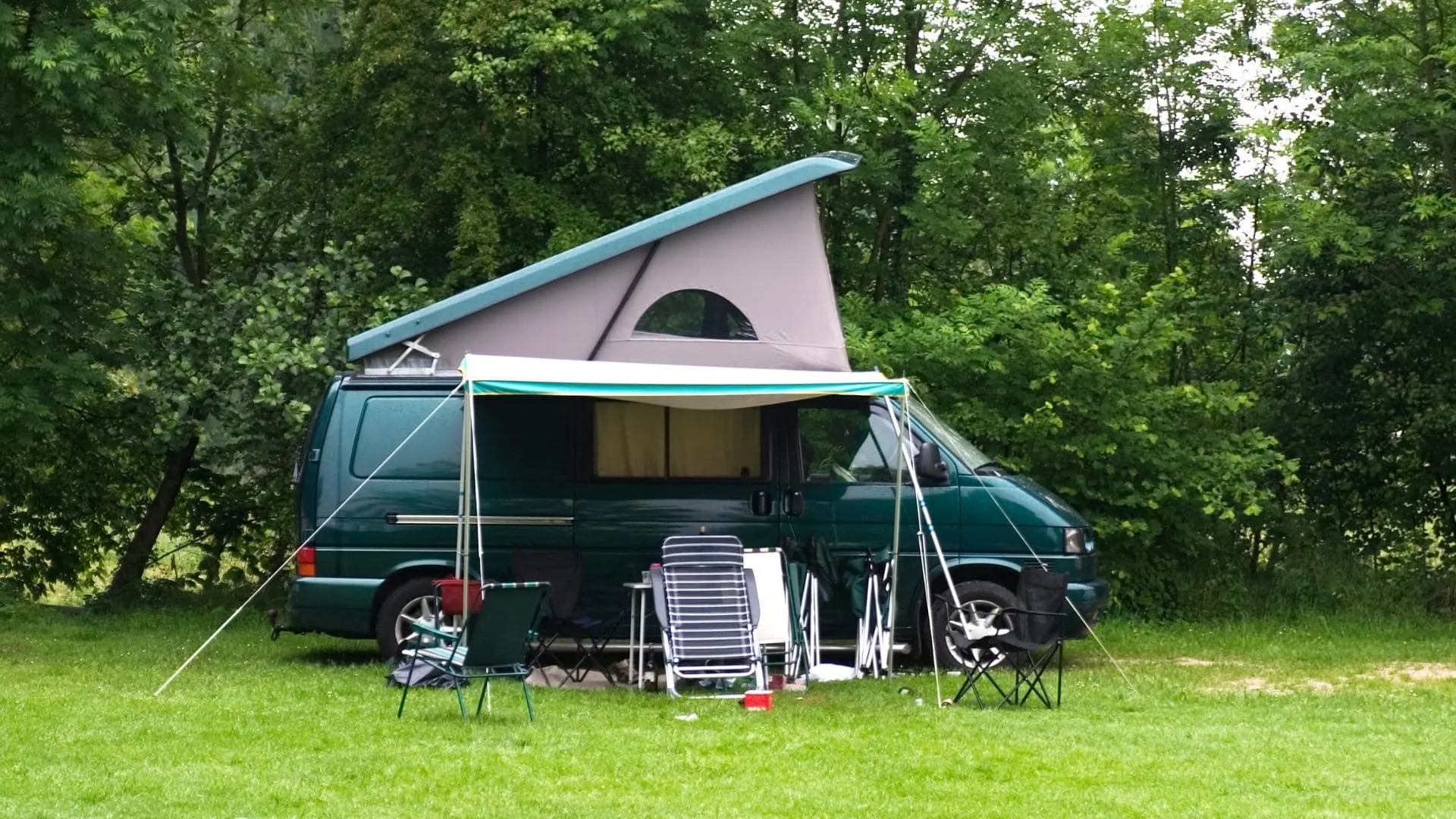
Camper vans come in many different shapes and sizes, and some have a variety of amenities such as a small refrigerator and propane cooktop, or an additional bed created by a pop-top roof as this van has. Others are “self-built” campers that started as cargo or passenger vans and evolved into small RVs.
Vans benefit from many of the benefits of smaller RVs: they are easy to drive, easy to park, and offer tremendous freedom in terms of where they can go. In a small camper van, you can navigate anything from the busiest city streets to some pretty remote areas with tough terrain.
The versatility and size of a small camper van allow for it to be a daily driver in addition to a very tiny home on wheels, adding to the affordability factor.
Are there disadvantages? Of course, there are. And we’ll get to a list of the advantages and disadvantages of small rigs in just a minute. First, let’s run through the other small rigs that prove that bigger isn’t always better.
Small Travel Trailers
Small travel trailers include everything from pop-up campers to teardrop campers to small towables. Some small travel trailers have room only for a bed and a few personal items, while others have room to sleep a few people as well as a wet bath and a small galley kitchen area. These are known as self-contained RVs which means that they have everything you need to live in them comfortably, (albeit compactly)!
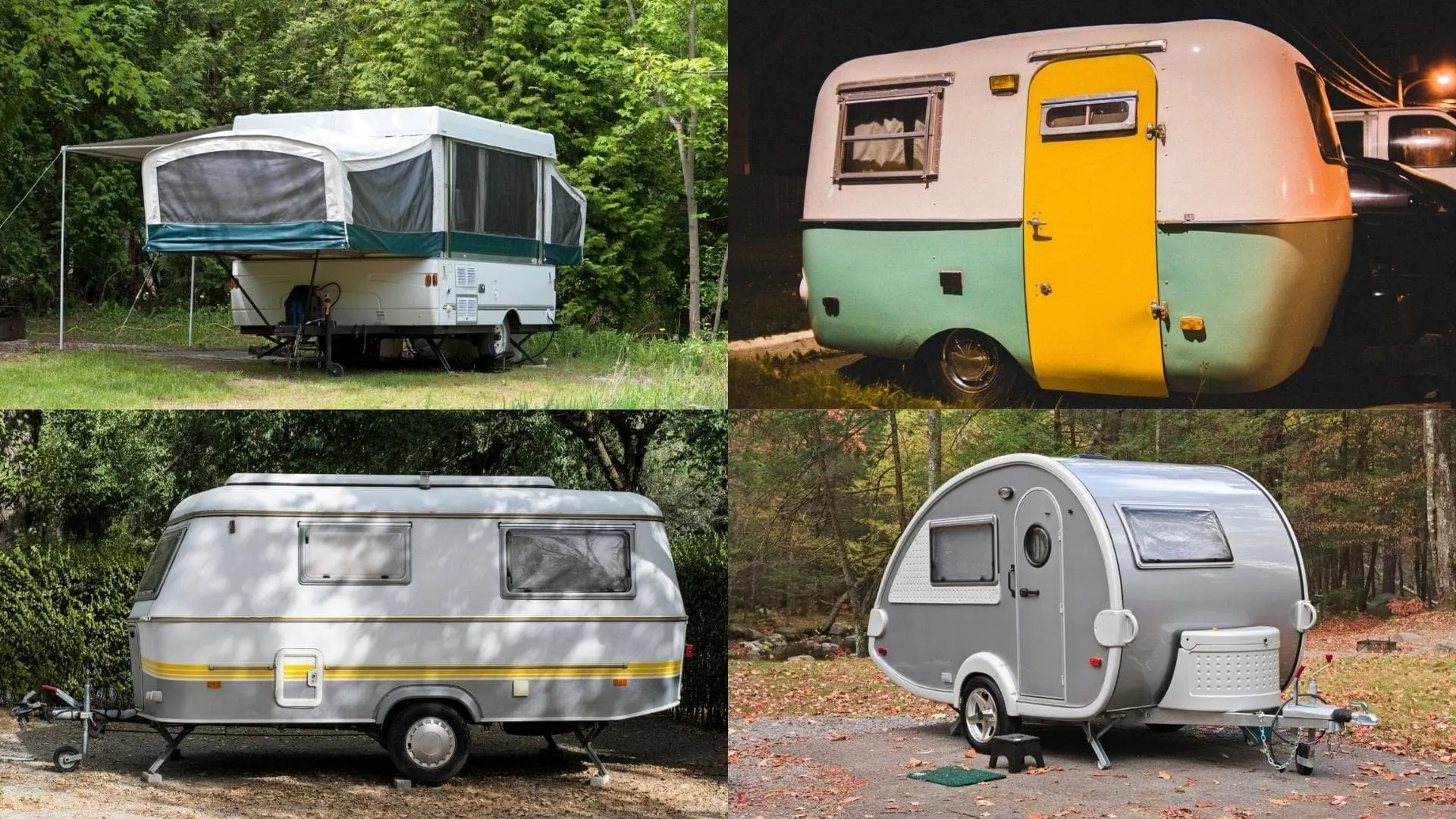
These small RVs represent a group of towable rigs known as travel trailers. Small travel trailers are often an RVer’s first introducing to camping and traveling with an RV.
Small travel trailers can be a cost-effective way to get into RVing. Not only can they be relatively inexpensive to purchase in some cases, but some are so lightweight that they can be towed by the family SUV or minivan… another great benefit of smaller RVs.
Truck Campers
Truck campers sit in, and are attached to, the bed of a pickup truck and offer a tiny living space that many travelers really love. Some trucks have the capacity to travel well off-road, and the addition of the camper is just exactly what overlanders need for their camping and traveling expeditions.
Truck campers can offer anything from simple sleeping and relaxing quarters to an entire home featuring a kitchen area and bathroom. Of course, the truck that hauls the camper has to graduate with the size, weight, and style of the camper.
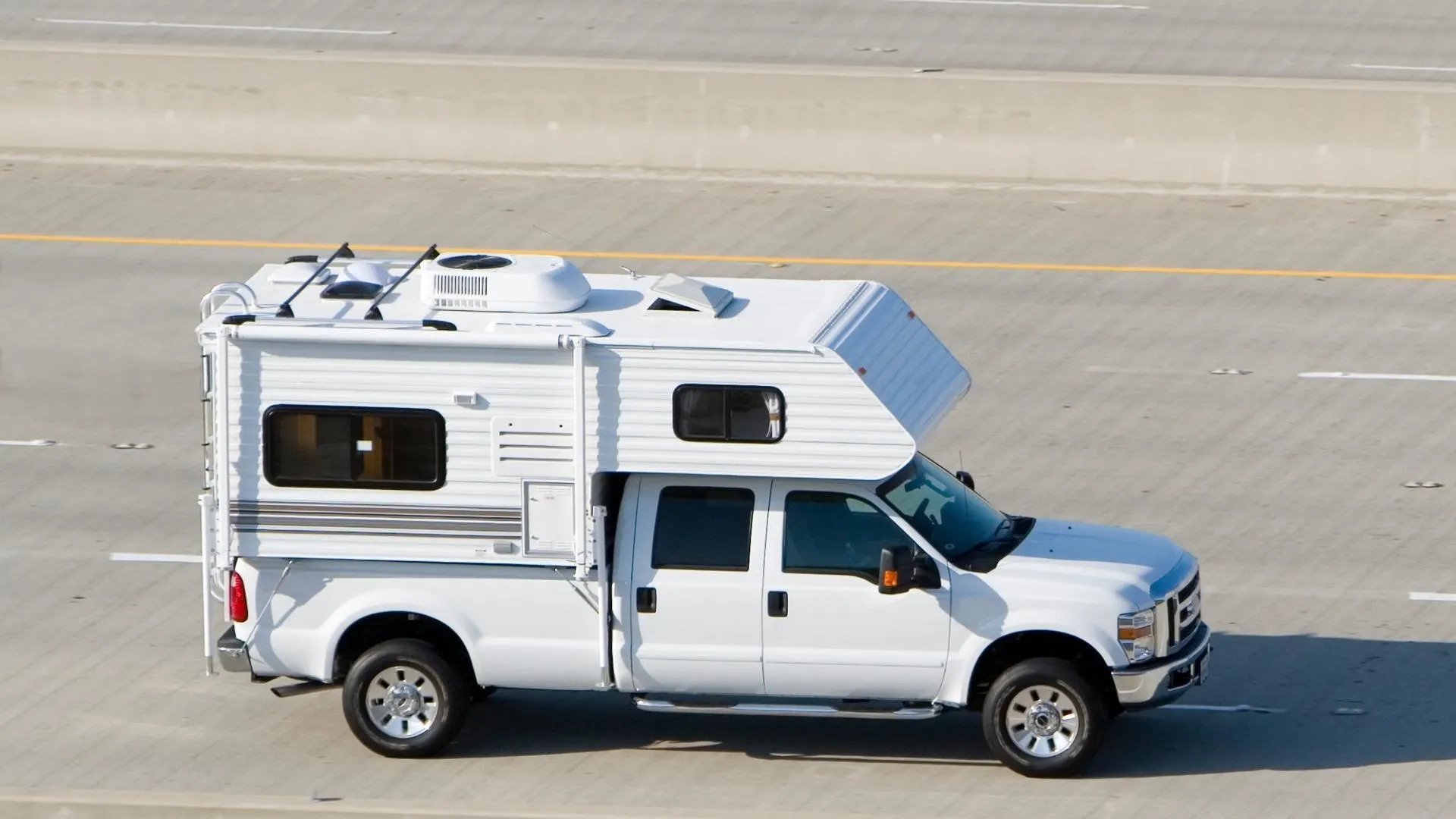
A truck camper sits in the bed of a pickup truck and over the cab. Truck campers may be a simple design or may include amenities such as a wet bath and small kitchen. A truck camper can be lifted off the truck to stand on its own so the truck can be used independently for sightseeing, errands, etc.
Our friends Tom & Caitlin Morton traveled to and in Alaska with a truck camper. It was a substantial truck camper and they carried it on a Ford F350 dually, but it was still a significant downsizing from their 5th wheel. How’d they do with the downsizing? They loved it! (Though it didn’t make them want to give up their 5th wheel!) Be sure to check out their “Go North” series for more on their Alaskan adventures.
Class B RVs
Class B RVs are purpose-built camper vans that are well-apportioned motorhomes in a tiny package, providing a lot of the great benefits of smaller RVs.
Class B rigs have everything from kitchens to bathrooms to sleeping quarters to holding tanks and ample storage. They’re typically well-thought-out and well laid-out. But, while they provide most of the amenities one might expect from a tiny home-on-wheels, it’s all packed into a very small space.
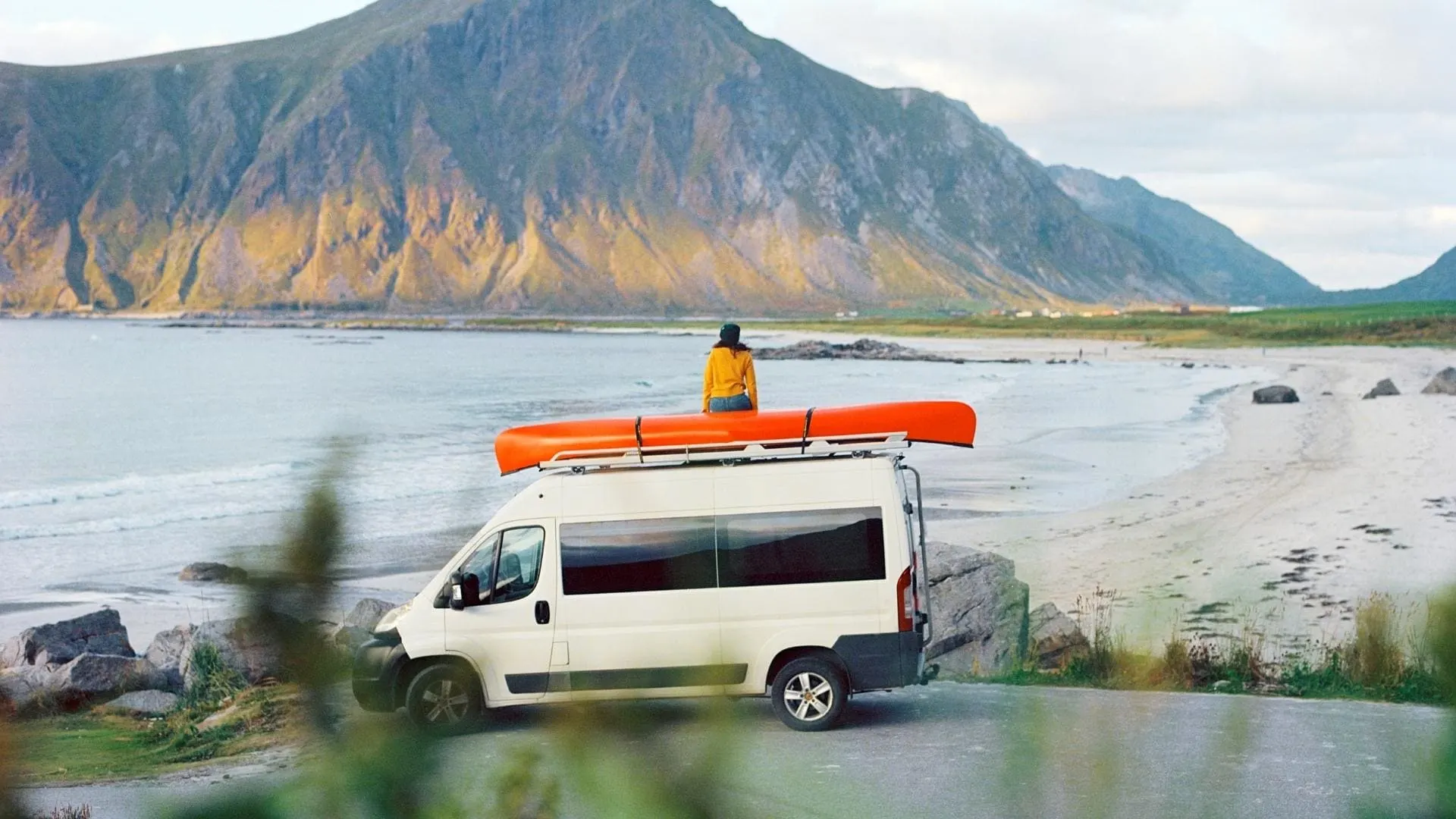
Class B RVs have all the amenities of a traditional RV but in a smaller package.
Class B RVs are typically taller, wider, and longer than the vans we discussed in the first section, but they’re very easy to drive, park, and maneuver through city streets as well as campgrounds.
The Class B RV is a very popular choice for many solo travelers and couples, and even for travelers with a small child or two (yes, this includes canine and feline “children”).
With a Class B rig, space is very tight, but you’ve got everything you need to live fairly comfortably, with the main idea being that you’re living OUT OF your RV, as opposed to living IN your RV.
Class B+ RVs
The Class B+ RV is another class of motorhome that’s snuck into the fray over the past decade or so. Manufacturers designed the Class B+ for people who wanted something a little bigger than a Class B RV but didn’t want a rig with the classic overhang of a Class C RV.
In truth, the “Class B+ RV” is more of a marketing term – it’s not an official Class of RV. As a matter of fact, when you go to register and insure your so-called “Class B+ RV”, it’ll be registered and insured as a Class C. But we digress…
Class B+ RVs are built on the same type of cutaway chassis cabs that Class C rigs use, but they do away with the overhang you see on traditional Class C rigs.
These rigs have gained in popularity because, while they’re very easily maneuverable, they do offer more space than a Class B. We published a post on Class B+ RVs which we welcome you to check out for more information.
If you’d like to see a tour of one of the Class B+ RVs we’ve rented when traveling abroad, have a look at our Class B+ RV Tour ???? — In-Depth Look at Our New Zealand Wilderness Motorhome Rental. We lived in this one for five weeks and we’d love to show you around while giving you our take on the pros and cons.
Some Class C RVs
Some Class C RVs are considered small RVs, but not all! A Class C rig can be anywhere from 21 feet to 41 feet in length. That’s quite a variation in size!
The shorter, smaller end of the scale of Class Cs offers a small RV overall, with the classic overhang over the cab. This area was originally intended for use as an additional sleeping area, but in time some floor plans have used the overhang area for entertainment centers and storage for travelers who have no need for an additional bed.
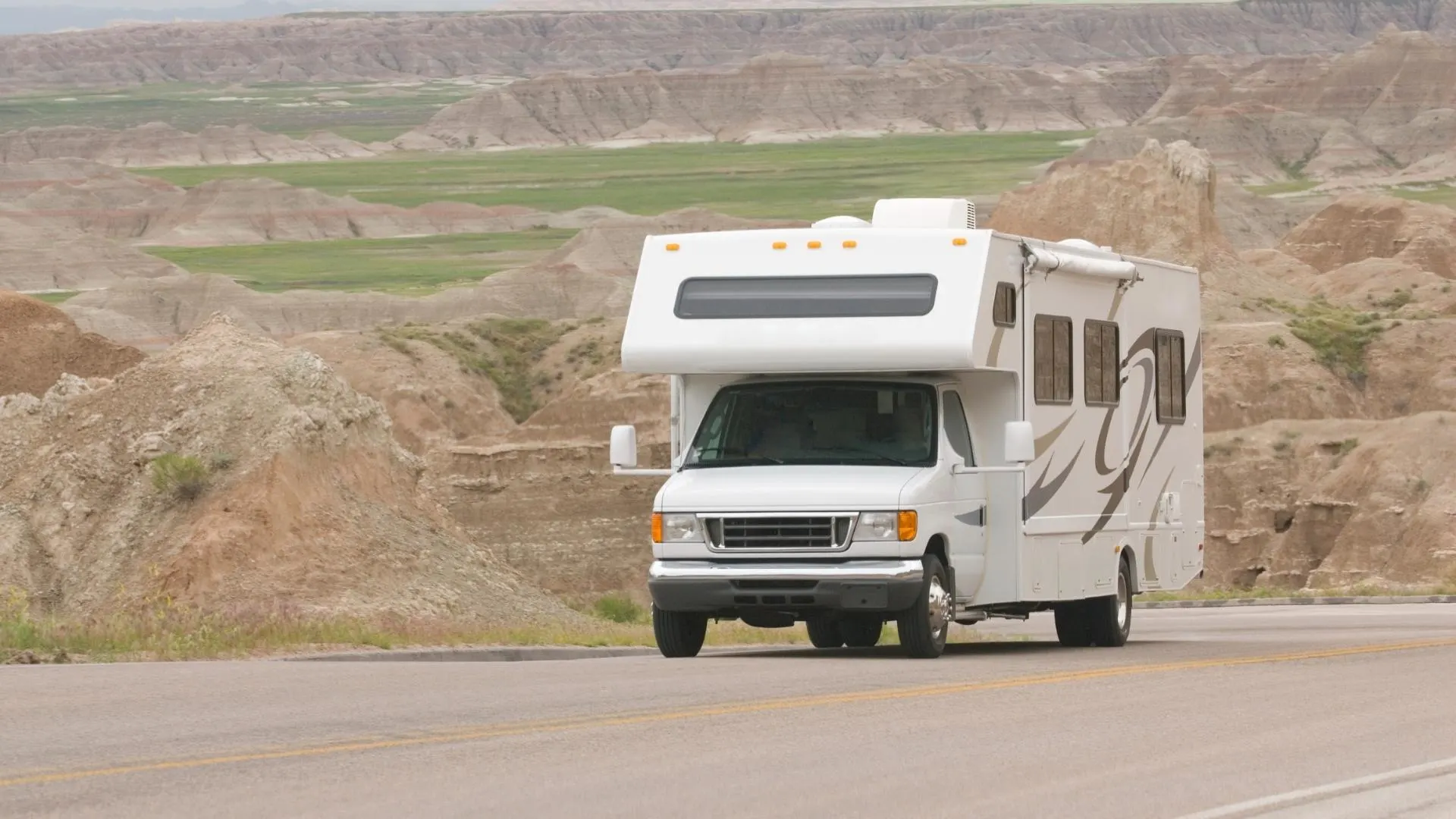
You can identify a Class C RV by the classic overhang above the cab. This was traditionally used for the placement of an additional bed, but some Class C’s today use that area for storage or entertainment centers.
Some Class A RVs
And finally, even some Class A RVs are considered small RVs. This comes as a surprise to many, but it’s true.
We tend to think of a Class A RV as the big daddy of motorhomes. But despite the fact that they’re larger and taller than many RVs, (see our post asking “How tall is a Class A motorhome?” for more info), there’s a wide variation in the sizes of Class A rigs available on the market today. This is because there are many travelers who want all of the amenities offered by a Class A RV, without the largest footprint and typical fuel consumption of a Class A motorhome.
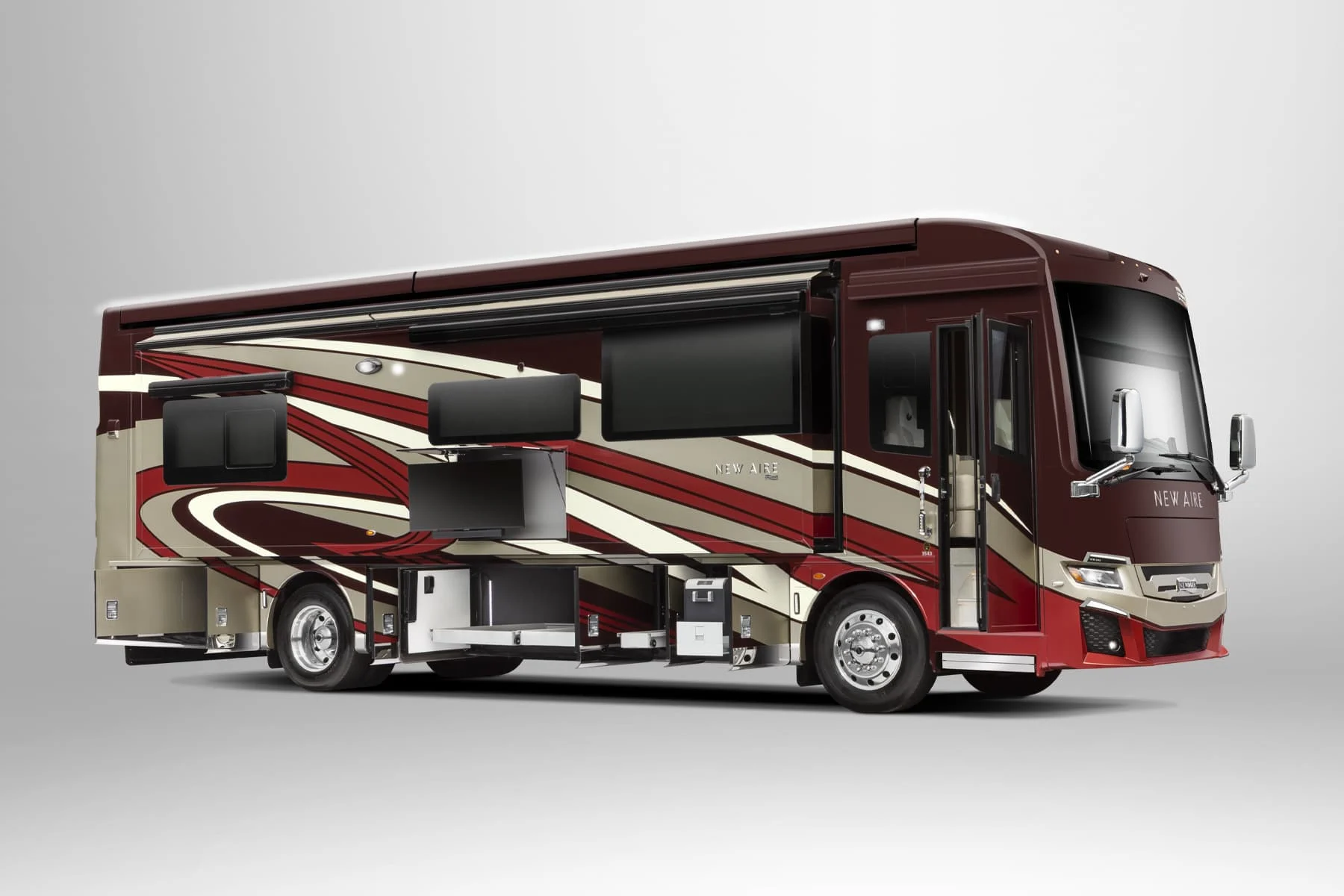
Newmar’s New Aire is considered a small Class A RV. It has all the benefits, luxuries, and amenities of larger Class As but in a smaller footprint. (Photo credit: Newmar Corp)
Rigs like THOR’s Vegas/Axis, Newmar’s New Aire (33-35′ diesel pusher), and the Tiffin Breeze are examples of smaller (though not entirely small) Class A RVs. For more detailed information, you can check out our post on 5 small Class A motorhomes.
What Are the Benefits of Smaller RVs?
There are lots of reasons why bigger isn’t always better where RVs are concerned.
For one thing, travelers have different needs and desires. There are some travelers for whom a large RV wouldn’t work at all. Moreover, smaller rigs have numerous benefits.
Let’s take a look…
More Economical & Efficient
Smaller RVs generally cost less in every way there is to cost less! They’re less expensive to buy, they generally offer better fuel economy, the tires cost less (fewer of them and they’re often smaller), and they present a smaller space to heat and cool, so there’s less energy consumption overall in terms of both propane and electrical power.
Ease of Driving & Parking
There’s no question that driving and parking a smaller RV is easier than driving and parking a large rig. It’s easier to handle everything from turning to backing, to highway merging, to navigating busy city streets, to managing difficult terrain.
Also, small motorhomes like Class B and B+ RVs and vans are no more difficult to park than a large car, SUV, or minivan. Many fit in a regular parking spot and are easy to backup safely.
Often Require Less Setup
Smaller RVs require less setup at the campsite.
First of all, arrival at the site is simpler as it’s so easy to slip into the campsite, even if you’re backing in. Then there’s generally less leveling that needs to be done.
Owners of very small RVs or vans also don’t have the added setup involved with extending slides and setting up the interior. They can just put it in Park, hook up to the campsite amenities (power, water, and/or sewer) if available, and start relaxing.
Access to Areas Where Large RVs Can’t Go
Smaller RVs can park and camp nearly anywhere. From remote areas to small campgrounds, to state and national parks, to the driveway of a relative – almost any area can accommodate a small rig.
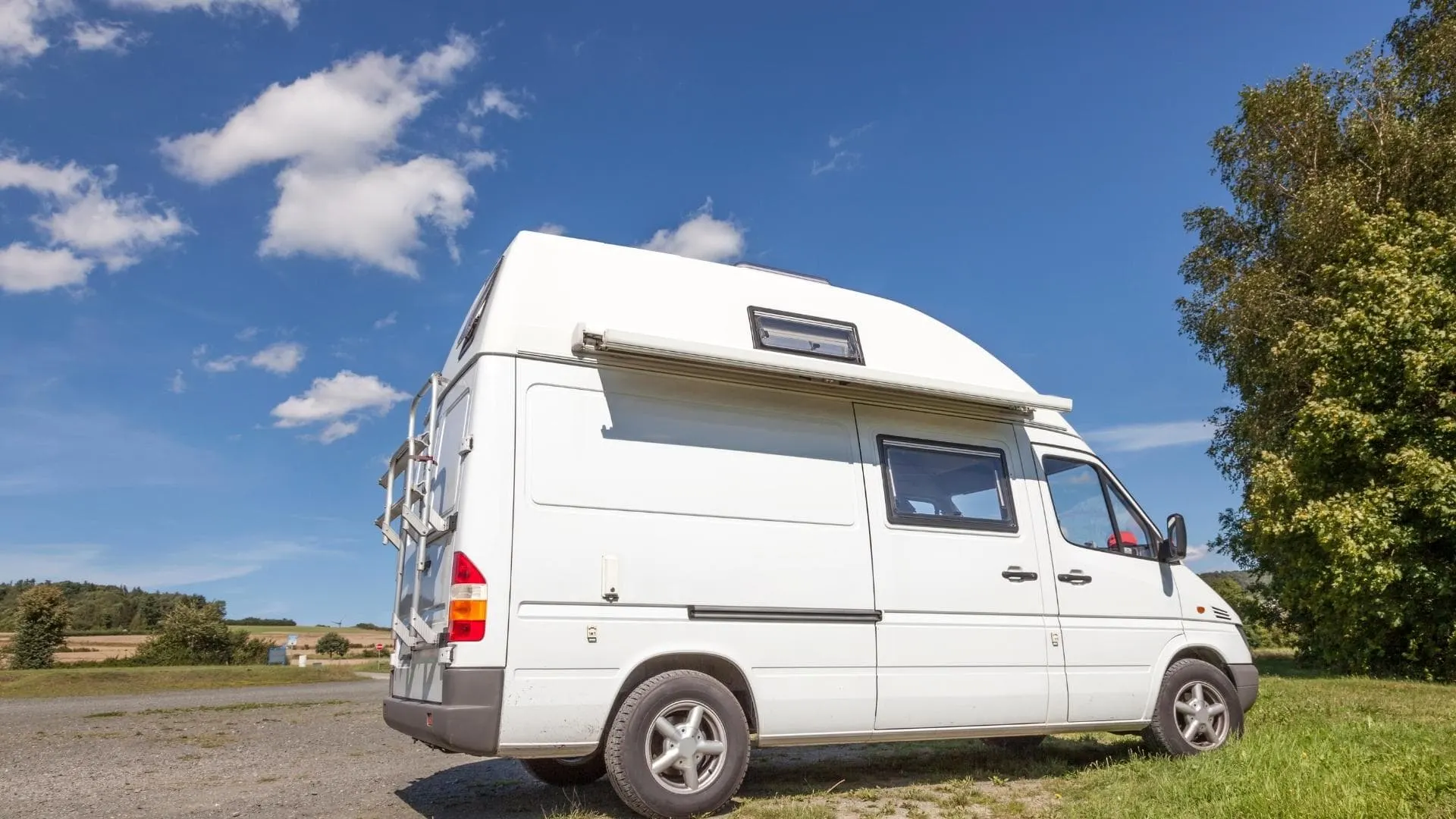
Among the primary benefits of smaller RVs is the ability to park anywhere and to easily navigate city streets and rugged rural terrain.
However, larger rigs can be much more difficult to take to certain places. Our 43’ Class A hasn’t kept us away from too many places, but there are plenty of backcountry campsites, state/national park campgrounds, driveways, and streets where we literally wouldn’t be able to drive (let alone park), and we’d certainly prefer not to have to navigate tight city streets with our rig (imagine us trying to drive our motorhome on the narrow roads in the U.K.?!?!).
The difference between driving our Class A through New York City streets or driving a small Class B through those same busy city streets is very significant.
We love going to the city, so we don’t let that stop us. But we use our toad, a Honda CR-V, to maneuver around busy city streets. This brings us to the next point…
No Need For a Toad
With a smaller RV, there’s no need for a toad!
With a Class B or B+ RV, for example, you can just drive your rig to wherever you want to go. With a small travel trailer, you can leave your little rig somewhere and simply drive around in your tow vehicle. The same is true for a truck camper. Put the camper down on its own and drive the pickup truck into town.
But with a larger RV, if you want to bring a toad along, there’s another level of preparation and navigation involved, as you can see in our post all about towing a car behind an RV.
Small Motorhomes Can Be Used as a Daily Driver
And finally, small motorhomes like vans, Class B RVs, and Class B+ RVs can be used as a daily driver. Many people use a van or a Class B RV as their only vehicle, and some use it as their family’s second car. But any way you slice it, a trip to the post office, the grocery store, or the local ice cream shop is relatively easy in a small van camper or Class B RV.
What Are the Disadvantages of Smaller RVs?
Like anything else, where there are advantages there are also disadvantages, and we’d be remiss not to visit those associated with smaller RVs.
Less Living Space
Perhaps the most obvious disadvantage of smaller RVs is the lack of living space. There’s very little living space in a Class B van and even less in a regular van being used as a camper. Again, most travelers with very small RVs live OUT of their rigs and not IN them.
But still, there are times of the day when people spend time inside their RVs, and there are days when the weather requires us to be inside for even longer periods. That’s not as easy in a small van as it is in a larger rig.
Kids, pets, spouses, and all other traveling companions can grate on the nerves of even the most patient person when everyone is confined together in a small living space.
We often hear that the tiny living space really isn’t an issue, but…umm…yes, it is. ????
Less Privacy
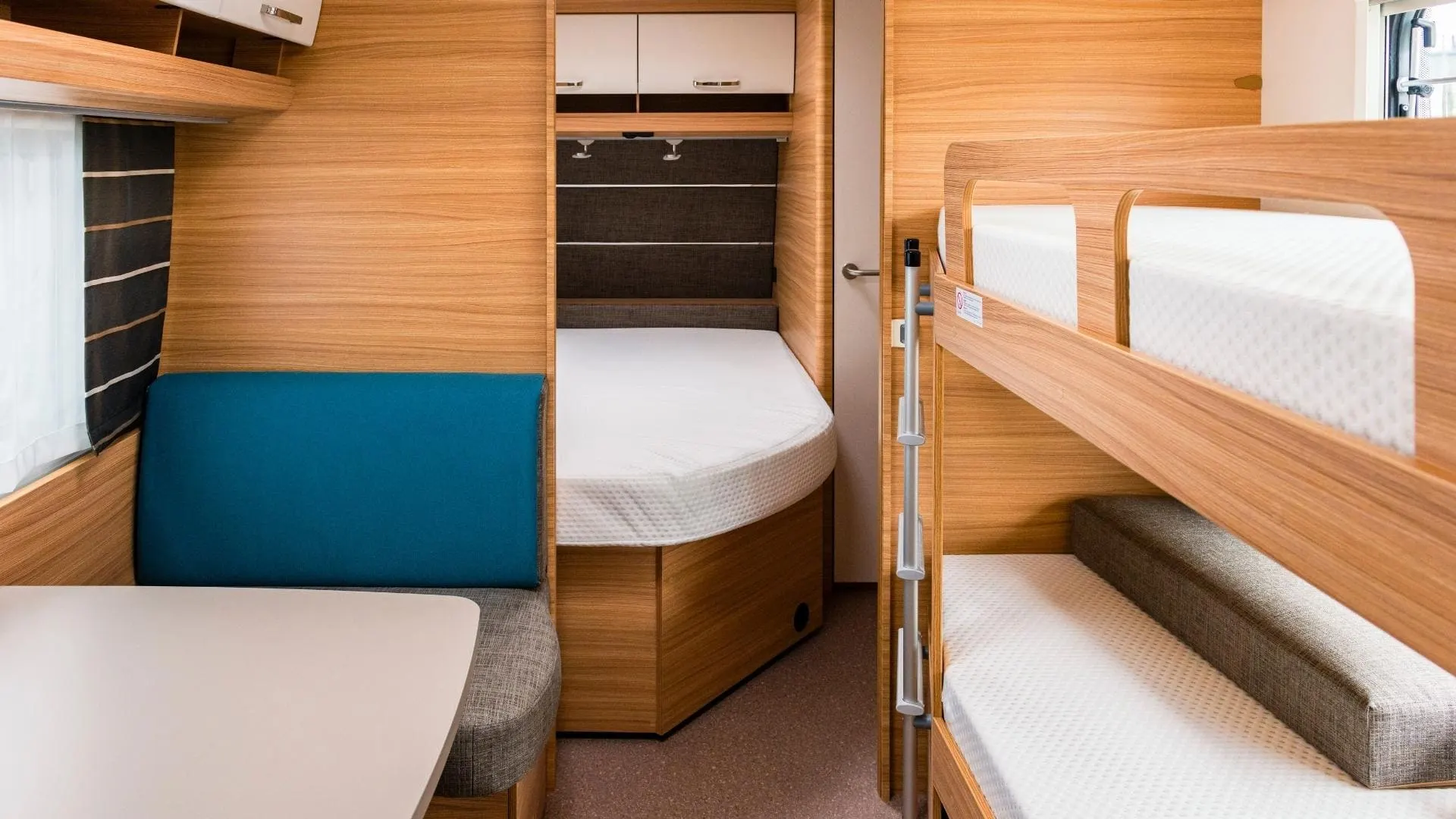
One stark disadvantage of a smaller RV is the lack of privacy. The minimal living space can also feel confining.
The less living space you have, the less privacy you have.
Getting any real degree of privacy in an RV the size of a van isn’t unlikely – it’s impossible.
If you’re traveling with others and privacy is a thing you value, the smallest RVs might not be for you.
Less Storage Space
Depending on how long you tend to travel without returning to a home base, you may need substantial storage on your RV and you’re unlikely to get that with very small rigs.
The designs of some Class B rigs and other small RVs are quite impressive with regard to their generous storage areas, but no matter how well you pack or how well organized you are, there’s simply not a lot of space on a small RV.
Not only is there less room on a small RV, but there’s also far less allowance for weight. So, with smaller rigs, you’ve really got to account for what you’re packing and where you’re packing it. And you need to be very cautious about your rig being overweight because it can happen very quickly.
Smaller Holding Tanks
This is a big one for us, but it may not be significant for other travelers, which is why we always say – get the smallest RV that’s comfortable for YOU.
We need large holding tanks because we boondock regularly, AND we like to stay out for long periods of time. We couldn’t get by with a 25-gallon fresh water tank and a 20-gallon black water tank. That would never work for us.
However, there are people who use campgrounds and RV parks exclusively, and they know they’ll always be connected to shore power, water, and sewer. The size of their holding tanks matters very little to these travelers.
But smaller holding tanks are definitely a disadvantage of smaller RVs for people who like to boondock as much as we do.
More Likely to Have a Wet Bath
Smaller RVs are more likely to have a wet bath. Some people may not mind this, (or may THINK they won’t mind this), but in general, unless you happen to be a person who enjoys showering in public campground showers (or other public showers), or who doesn’t shower all that regularly, a wet bath is rather a bit of a pain in the neck.
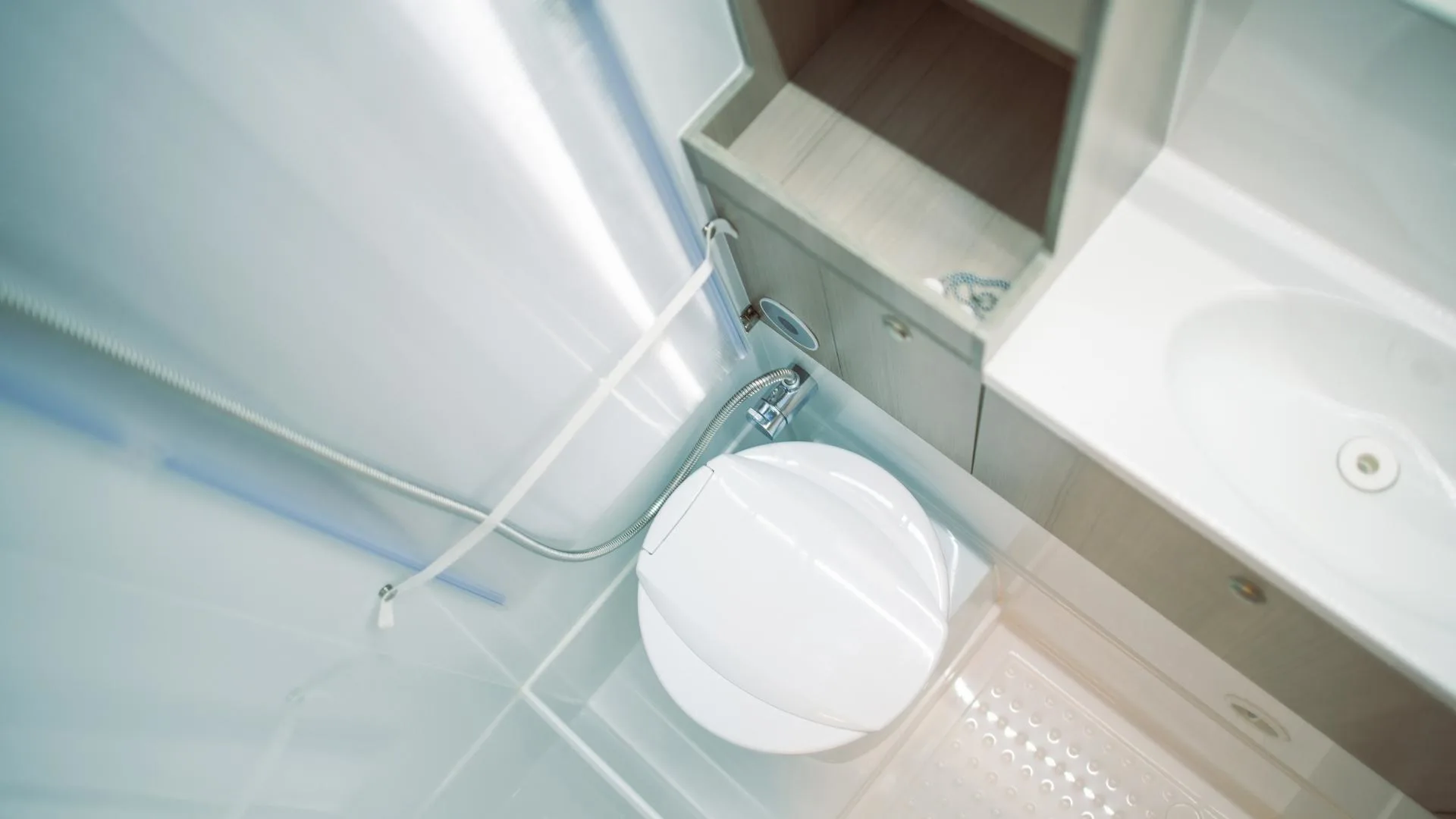
In an RV wet bath, everything gets wet when the shower is used.
This can be difficult to understand until you spend some time living in an RV and using a wet bath, though, so many people look at a wet bath and think it will be perfectly fine. And again – for some it is. But for the most part, showering in the same area where the sink and toilet are, having to move things out of the bathroom every time you shower, and having to dry the entire bathroom after every shower…GETS OLD FAST.
We’re not complaining here – it’s definitely a first-world problem, and we loved our little rented Class B+ when we were traveling abroad. But we never did come to love the wet bath.
Feel free to see our post for more details on RV wet baths and why they suck aren’t the best option for many people.
Can’t Invite Many Guests to Travel With You
Let’s face it – a very small RV is tough to share with the person you love and already share your life with. Adding guests to that small RV is in some cases not physically possible… and in other cases downright annoying.
Even in a larger RV, there are privacy and comfort considerations to make. Feel free to check out our video for how we deal with those issues when we have guests. But frankly, we can’t imagine having guests aboard a Class B or a teardrop trailer!
So, tell us – have you traveled in a small RV? We’d love to know your thoughts. Have we missed anything? Did we thoroughly cover the benefits of smaller RVs as well as the disadvantages? Chime in down in the comments section below!
Geek Out With Us Every Week
Join our newsletter to learn about all things RV-related. Every week we offer free tips, tricks, product reviews, and more to our online community of RVers. So, whether this is your first time on the road or you’re a seasoned expert, we’d love for you to geek out with us!


Gay Tacoma Travel Enthusiast (Jason)
Thursday 14th of March 2024
I'd buy a GMC Motorhome if I had someone to share the experience and responsibilities with. While it may not be large enough for everyone, I would think even a full-time RVer could live in something between 20 and 30 ft. in length.
RichardM
Thursday 14th of March 2024
Over the last 45+ years I’ve had small class C, small travel trailer, truck camper, medium size travel trailer, medium 5th wheel, and now a 41’ DP. All except the DP made multiple trips from/to AK. The only one I would never get again is the truck camper. The class C and DP is the easiest to travel with with the 5th wheel next. The towables were more hassle. We are thinking of adding a class B for shorter trips but they seem really expensive for what you get.
Ray
Monday 13th of March 2023
We started off small, a 19ft class C , Then a 24 ft class B+ with a full wall slide. We now have a 26.5 ft class C with a dinette slide. This motorhome suites us the best. When does a motorhome classify from small to big in length ?
TheRVgeeks
Sunday 19th of March 2023
Nice progression of rigs, Ray. Not sure if there's necessarily an "official" definition, but typically anything 40 feet and over is considered a "Big Rig".
Gay Travel Enthusiast
Monday 13th of March 2023
Exactly! Since when does a motorhome have to be 40ft or larger in length? Even a full-time RVer doesn't need that much space. I wish I had a photo to post here of what I'd buy. If only more smaller motorhomes were available. While a Toyota Tacoma based truck would be nice, maybe a Tundra if available, I'd want it to be between 20ft. in length and 30ft. in length.
Glynn Robinson
Thursday 24th of March 2022
I recently switched from a 42’ fifth wheel to a 32’ Class C and couldn’t have made a better decision. It just fits us better. Just took our first long trip out to Carlsbad, Big Bend, and San Antonio. Easier to maneuver. Easier to fuel up. Set up is quicker and less work. Also gave us access to campsite spaces we couldn’t hope to fit our former trailer into. We also found, when offloading the old trailer and on loading the new motor home, we were traveling with a lot of stuff we never used so we scaled it all down to necessities and a few creature comforts items. We did sacrifice a bit of living space, but found it didn’t matter to us. Maybe the best benefit for us is that I can store it on my own property. I invested in a 30 amp hookup that has already paid for itself compared to having to pay for storage remotely. Good choice for us, but you do need know what fits your needs the best. Next big trip is Cape Cod in June.
TheRVgeeks
Friday 25th of March 2022
Congrats, Glynn. Sounds like you've made a great move downsizing. Those are the very reasons we always tell people looking at their first RV to only get one that's large enough to suit their needs and avoid the temptation to think that "bigger is better!" It has its dark side! Hope you really get to enjoy your new Class C. Safe travels!